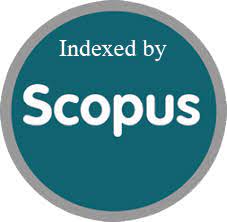Experimental Investigations on Geopolymer Concrete for Sustainable Construction
Keywords:
GGBS, Geopolymer ConcreteAbstract
The search for environmentally friendly construction materials with durability comparable to ancient concrete has spurred significant interest in alkali-activated cementitious systems over the past two decades, leading to the development of Geopolymer Concrete (GPC). This study focuses on the development of geopolymer mixes using various proportions of fly ash and Ground Granulated Blast Furnace Slag (GGBS), and investigates their mechanical properties. A comprehensive literature review on the mechanical and durability aspects of geopolymer concrete has also been conducted.
In this research, the ratio of sodium hydroxide (NaOH) to sodium silicate was maintained at 1:2 for all mixes, while the alkaline liquid-to-binder ratio was fixed at 0.70. However, the concentration of sodium hydroxide solution was varied as 6M, 4M, and 3M. Three mix designs were prepared—F75G25, F50G50, and F25G75—where "F" and "G" represent fly ash and GGBS, respectively, and the numerical value indicates the percentage of fly ash replaced by GGBS. These mixes were prepared in the AML Laboratory at CSIR-SERC, Chennai. Ambient curing at room temperature was adopted for all specimens.
Compressive strength was measured at 3, 7, and 28 days. Results indicated that the compressive strength of geopolymer concrete increased with a higher percentage of GGBS in the mix. Notably, the mix F25G75, with 75% GGBS and 25% fly ash, achieved the highest compressive strength at a NaOH concentration of 3M. Additionally, leaching in geopolymer concrete was found to decrease with increasing GGBS content.
Overall, geopolymer concrete demonstrates relatively higher strength and improved durability characteristics, making it a promising sustainable alternative to conventional Portland cement concrete.
Downloads
References
Chamila Gunasekara, W. (2016). Durability performance of fly ash-based geopolymer concrete exposed to marine environment. Construction and Building Materials, 117, 119–127. https://doi.org/10.1016/j.conbuildmat.2016.04.153
Ghosh, R., Mandal, S., & Saha, S. (2018). Mechanical and durability performance of geopolymer concrete using fly ash and GGBS blends activated with alkali solutions. Journal of Cleaner Production, 199, 254–263. https://doi.org/10.1016/j.jclepro.2018.07.045
Madheswaran, C., & Gnanasundar, D. (2013). Effect of NaOH molarity on strength of fly ash-GGBS blended geopolymer concrete. International Journal of Engineering Research and Applications, 3(4), 570–576.
Rachit Ghosh, S., & Mandal, S. (2018). Performance evaluation of fly ash and GGBS based geopolymer concrete: Mechanical properties and leaching behavior. Environmental Science and Pollution Research, 25, 3571–3581. https://doi.org/10.1007/s11356-017-0598-0
Sun, Z., Li, Q., & Zhou, J. (2020). Comparative study on leaching behavior and mechanical properties of fly ash, metakaolin, and commercial geopolymer concretes. Journal of Materials in Civil Engineering, 32(5), 04020052. https://doi.org/10.1061/(ASCE)MT.1943-5533.0003158
Zhang, Z., & Wang, J. (2013). Efflorescence formation in fly ash-based geopolymer under ambient curing conditions. Construction and Building Materials, 47, 1007–1014. https://doi.org/10.1016/j.conbuildmat.2013.06.060
..
Downloads
Published
How to Cite
Issue
Section
License

This work is licensed under a Creative Commons Attribution 4.0 International License.
You are free to:
- Share — copy and redistribute the material in any medium or format
- Adapt — remix, transform, and build upon the material for any purpose, even commercially.
Terms:
- Attribution — You must give appropriate credit, provide a link to the license, and indicate if changes were made. You may do so in any reasonable manner, but not in any way that suggests the licensor endorses you or your use.
- No additional restrictions — You may not apply legal terms or technological measures that legally restrict others from doing anything the license permits.






